|
TRANSLATE THIS ARTICLE
Integral World: Exploring Theories of Everything
An independent forum for a critical discussion of the integral philosophy of Ken Wilber
 David Christopher Lane, Ph.D.
Professor of Philosophy, Mt. San Antonio College Lecturer in Religious Studies, California State University, Long Beach Author of Exposing Cults: When the Skeptical Mind Confronts the Mystical (New York and London: Garland Publishers, 1994) and The Radhasoami Tradition: A Critical History of Guru Succession (New York and London: Garland Publishers, 1992). David Christopher Lane, Ph.D.
Professor of Philosophy, Mt. San Antonio College Lecturer in Religious Studies, California State University, Long Beach Author of Exposing Cults: When the Skeptical Mind Confronts the Mystical (New York and London: Garland Publishers, 1994) and The Radhasoami Tradition: A Critical History of Guru Succession (New York and London: Garland Publishers, 1992).
THE STUDY OF CONSCIOUSNESS
Glimpses into the Life and Work of Great Thinkers in Neuroscience and Philosophy
Chalmers |
Changeux |
Chomsky |
Churchland, Paul |
Churchland, Patricia |
Crick |
Dennett |
Edelman |
Flanagan |
Humphrey |
Huxley |
Koch |
Leary |
Lilly |
McKenna |
Nagel |
Tononi
Timothy LearyEmily Park
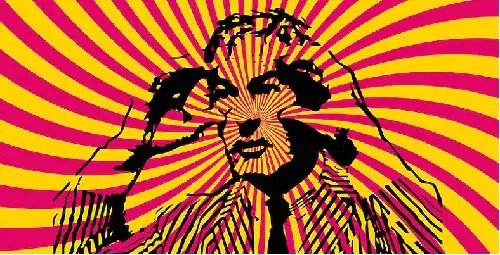 “The aim of human life is to know thyself. Think for yourself. Question authority. Think with your friends. Create, create new realities. Philosophy is a team sport. Philosophy is the ultimate, the ultimate aphrodisiac pleasure. Learning how to operate your brain, learning how to operate your mind, learning how to redesign chaos.” —Timothy Leary Timothy Francis Leary was born into an Irish Catholic household to parents Timothy Leary and Abigail Ferris on October 22, 1920 in Springfield, Massachusetts. Leary initially studied at the College of the Holy Cross before reluctantly entering the United States Military Academy because of his father. He served in the military throughout World War II and received multiple medals for his military achievements. To further pursue his education after the war, he sought his undergraduate degree at the University of Alabama and received a M.S. in Psychology at the State College of Washington. He finalized his educational journey by receiving a Ph.D. in Clinical Psychology from the University of California, Berkeley. He worked in various locations: University of California, San Francisco as an assistant clinical professor, Kaiser Hospital as cofounder of the psychology department, and Harvard University as a lecturer of clinical psychology and researcher of personality and social relationships. 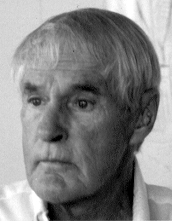 Timothy Leary In 1945, he married his first wife, Marianne Busch, whom he met while stationed in Butler, Pennsylvania when serving in the military. The marriage was short-lived, however, since Marianne committed suicide in the garage of their house, by locking herself in and inhaling the car's engine fumes, leaving Leary with two children to raise. She did this on her husband's birthday. Leary married four other women throughout his lifetime, but only had two biological children from his first wife Marianne. His first encounter with drugs took place in Mexico when he discovered Psilocybin mushrooms. The mushrooms were used by the Mazatec people of Mexico in their spiritual rituals. After consuming the drug, he realized that there was a greater knowledge that was to be discovered about his own brain. As a result, in 1960, Timothy Leary and psychologist Richard Alpert (an assistant professor at Harvard University) began to explore how psychotropic substances could affect the human mind. Together, the two psychologists conducted experiments with LSD (Lysergic acid diethylamide) and psilocybin, both legal drugs at the time, to document the effects they would have on the human consciousness. They conducted their experiment by distributing the drugs to Harvard graduate volunteer subjects and recorded their experiences. The two psychologists faced many concerns and criticisms with their project. They agreed with Harvard University's guidelines to only have volunteer subjects drawn from graduate students and that key guidelines would be in place. But these experiments were forced to stop when Alpert gave psilocybin to an undergraduate student, which was a prohibited action that led to the end of Alpert and Leary's career at Harvard University. From there on, Timothy Leary's infamous quote “Turn on, tune in, drop out,” introduced many Americans to psychedelics, drugs that are used to trigger psychedelic experiences through changing the perceptions of normal, everyday life. Leary and Alpert's passion for psychedelics did not stop after their dismissal at Harvard University, but it rather increased as a result. Leary and Alpert stayed in Millbrook, New York, where they continued to conduct research on the effects of drugs in humans. The driving force behind Leary's interest in drugs started with trying to understand the mystery of human consciousness. He was much more interested in how human consciousness could be expanded— how the brain could be used in a creative way, how to enhance human potential, and finding a pathway beyond mere existing. He was interested in how psychedelics provided a gateway for a spiritual revolution. Additionally, he was intrigued by how drugs could alter regressive behavior so he did pilot studies on prisoners to see if it could minimize recidivism. His initial results were significant but a much later study has cast doubt on its findings. As Rick Doblin explains, “This study is a long-term follow-up to the Concord Prison Experiment, one of the best-known studies in the psychedelic psychotherapy literature. The Concord Prison Experiment was conducted from 1961-1963 by a team of researchers at Harvard University under the direction of Timothy Leary. The original study involved the administration of psilocybin-assisted group psychotherapy to 32 prisoners in an effort to reduce recidivism rates. This follow-up study involved a search through the state and federal criminal justice system records of 21 of the original 32 subjects, as well as personal interviews with two of the subjects and three of the researchers, Timothy Leary, Ralph Metzner and Gunther Weil. The results of the follow-up study indicate that published claims of a treatment effect were erroneous. This follow-up study supports the emphasis in the original reports on the necessity of embedding psilocybin-assisted psychotherapy with inmates within a comprehensive treatment plan that includes post-release non-drug group support programs. Despite substantial efforts by the experimental team to provide post-release support, these services were not made sufficiently available to the subjects in this study. Whether a new program of psilocybin-assisted group psychotherapy and post-release programs would significantly reduce recidivism rates is an empirical question that deserves to be addressed within the context of a new experiment.”[1] One of his most famous contributions to the study of human consciousness is his Eight Circuit Model of Consciousness. Leary believed that the nervous system consisted of eight potential circuits or mini brains. He split up the brain into eight parts with four parts on the right and four parts on the left. The four parts on the left side were predominantly very active and used for our terrestrial survival, while the four parts on the right were known as the silent and inactive side used for future evolution. In order to engage in activity with the four parts of the right side of the brain, Leary believed that psychedelics was the answer to do so. Consequently, when drugs are used, it not only stimulates the right side of the brain, but it stimulates the already active left side leading it to be dangerously addictive. Other substances such as coffee, tea, and alcohol are believed to induce heightened stimulus of the brain as well. However, in order to discover these different realms of the brain, Leary believed that such substances would aid in unleashing the hidden potentials of a higher-level consciousness. He viewed being “high” as our brains way of taking our consciousness to an indescribable world. Leary was a strong believer in using drugs to further and thoroughly understand the human mind. Because of his advocacy of psychedelic drugs, President Richard Nixon labeled Timothy Leary as “the most dangerous man in the world.” His numerous run-ins with the law and eventual prison sentence and escape make for captivating reading. As David Colker of the Los Angeles Times explains: “On a moonless night in September 1970, he shimmied across a telephone line to the other side of the prison fence. A waiting car--arranged by the radical Weathermen underground movement, according to news reports and his autobiography--whisked him away, and he was smuggled out of the country. Leary became the guest of the Black Panthers in Algeria until he fell into disfavor with that group. He moved from country to country, trying to find a nation that would grant him asylum. In 1973, he was detained while trying to enter Afghanistan and was sent back to the United States. Leary was returned to prison, this time in Folsom, and at one point was placed in a cell across from Charles Manson. He was released on parole in 1976.”[2] After being released from prison, Timothy Leary became somewhat of a media celebrity and an early advocate of the Internet and its informational potential. After being diagnosed with terminal prostate cancer, Leary conducted a number of interviews describing how he was excited for the “next” adventure. He had become increasingly fascinated by death throughout the later years of his life and was able to treat his death as a celebration more than a time of mourning when it had finally reached him. On May 31, 1996, Timothy Leary died in Los Angeles, California. Leary will be best known for his contributions on psychedelics and has left a train of followers who are continually seeking to discover the effects of psychedelics on the mind. Further Reading1. The Politics of Ecstasy, Ronin Publishing; 4th edition (September 4, 1998) 2. Chaos and Cyber Culture, Ronin Publishing; 20th Anniversary edition (July 1, 2014) 3. Flashbacks, Tarcher (March 17, 1997)
 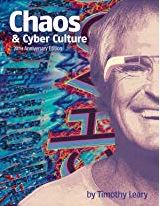 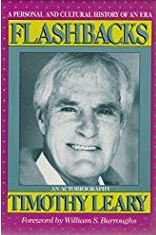 NOTES[1] Doblin R, "Dr. Leary's Concord Prison Experiment: a 34-year follow-up study.", J Psychoactive Drugs. 1998 Oct-Dec;30(4):419-26. [2] David Colker, "60s Drug Guru Timothy Leary Dies at 75", JUNE 1, 1996. MSAC PHILOSOPHY GROUP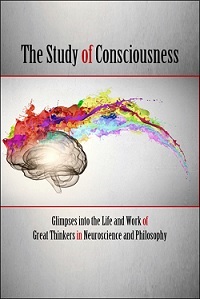
Human interest in the nature of consciousness dates far back to our ancestral past. However, it is only in the last century or so that researchers and philosophers have been able to tackle the problem in a more scientific way. This is primarily due to our increasing understanding of human physiology and how our brain functions. With the advent of ever more sophisticated technology—from fMRI scans, functional magnetic resonance imaging, to DARPA's neural engineering program, understanding neural “dust”—we are now able to not only create vivid simulations of cerebral activity but also to systematically reverse engineer the brain. Whether such empirical observations will unlock the secrets of self-reflective awareness is still open to vigorous debate. Nevertheless, the study of consciousness is now considered to be of elemental importance and has invited a large number of brilliant thinkers— from a wide range of disciplines, including mathematicians, quantum physicists, neuroscientists, and philosophers—to join in the discussions and offer their own contributions. The following essays briefly explore the life and work of pioneers in the field of consciousness studies. Included in this eclectic mix are such notables as Giulio Tononi (University of Wisconsin), Paul and Patricia Churchland (University of California, San Diego), Noam Chomsky (M.I.T.), the late Timothy Leary and Terence McKenna, and Jean Pierre Changeux (Collége de France) among others.
Comment Form is loading comments...
|